
Creating a flower bed under a tree canopy can be a great idea.
It’s a good way to make a beautiful garden in a spot that might otherwise be empty. Start by looking at how much sunlight the area gets and what kind of soil it has.
This will help you choose the right plants for your flower bed. You can pick flowers that like shade and the kind of soil you have.
By doing this, you can make a pretty and happy garden under your tree.
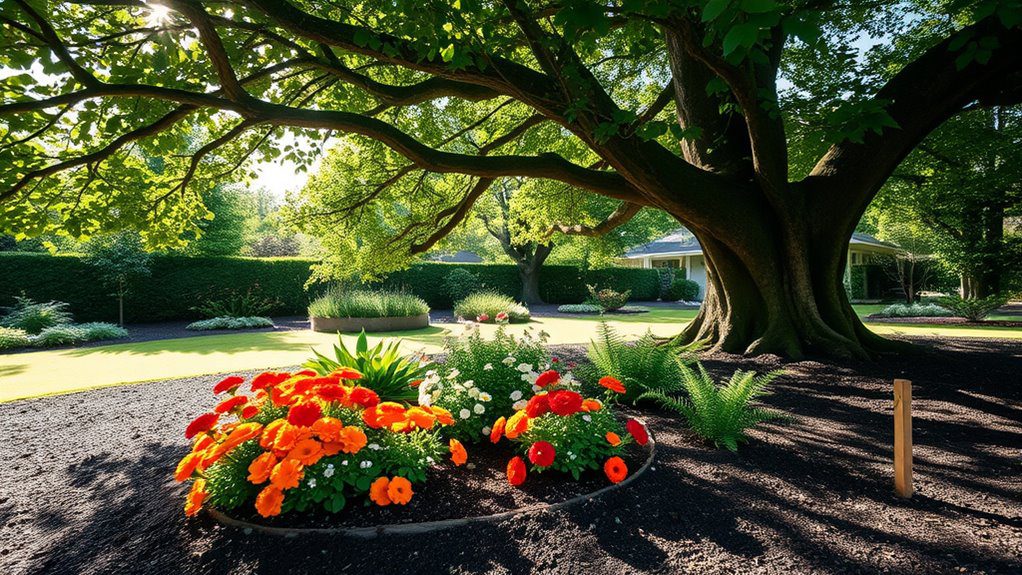
Evaluating the amount of sunlight your flower bed receives is essential for selecting the right plants and ensuring their vibrant growth. Observe your planting area throughout the day to determine whether it’s full sun, partial shade, or full shade. Most flowering plants thrive in at least 6 hours of direct sunlight daily. Keep in mind that variations in sunlight exposure may occur due to surrounding structures or trees, so reevaluate periodically, especially with seasonal changes.
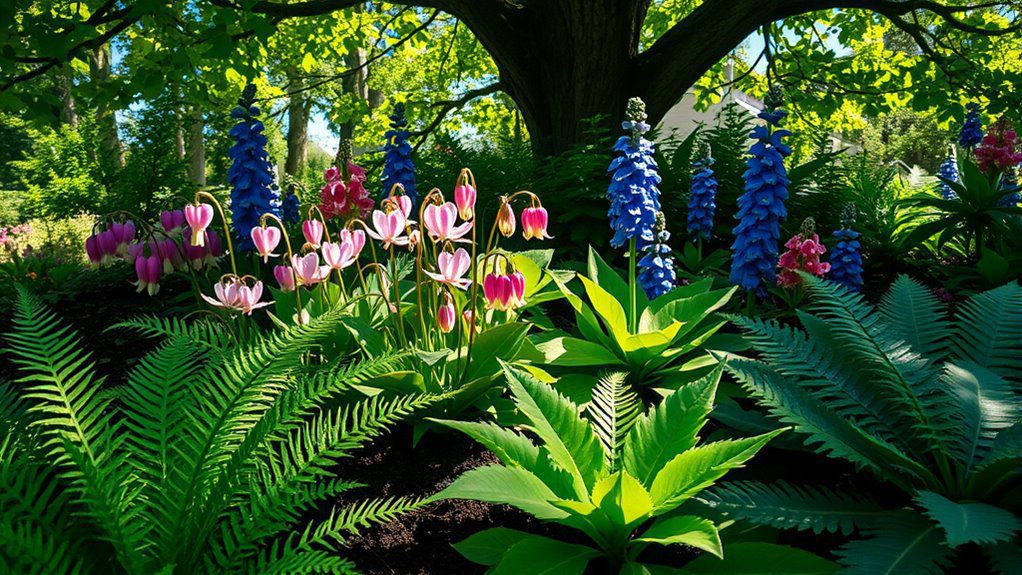
When selecting flowers for a shaded area in your garden, focus on shade-tolerant varieties that thrive in low-light conditions. Consider plants like hostas, astilbes, and ferns, which not only flourish in shade but also add lush texture and vibrant colors to your flower bed. Additionally, many shade-loving flowers, such as bleeding hearts and columbines, offer beautiful blooms that bring life to darker corners of your garden. With the right choices, your shaded spots can become stunning focal points.
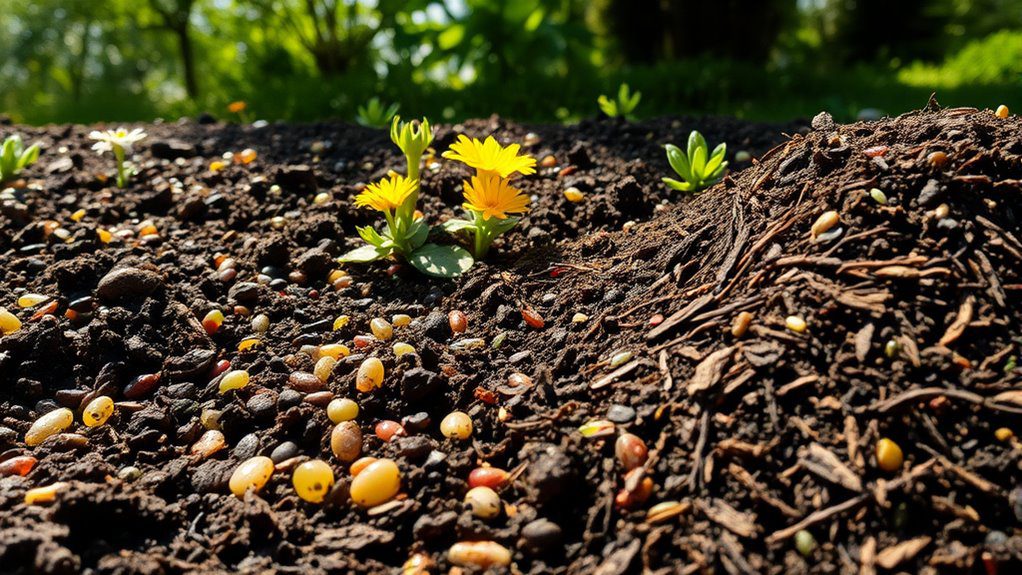
When designing a stunning flower bed, soil quality and drainage are paramount. Plants thrive in nutrient-rich, well-aerated soil that allows for proper root development. Conduct a soil test to assess pH and nutrient levels, and amend accordingly with compost or fertilizers. Additionally, guarantee your flower bed has adequate drainage to prevent waterlogging, which can lead to root rot. Incorporate organic matter to enhance soil structure and promote healthy blooms.
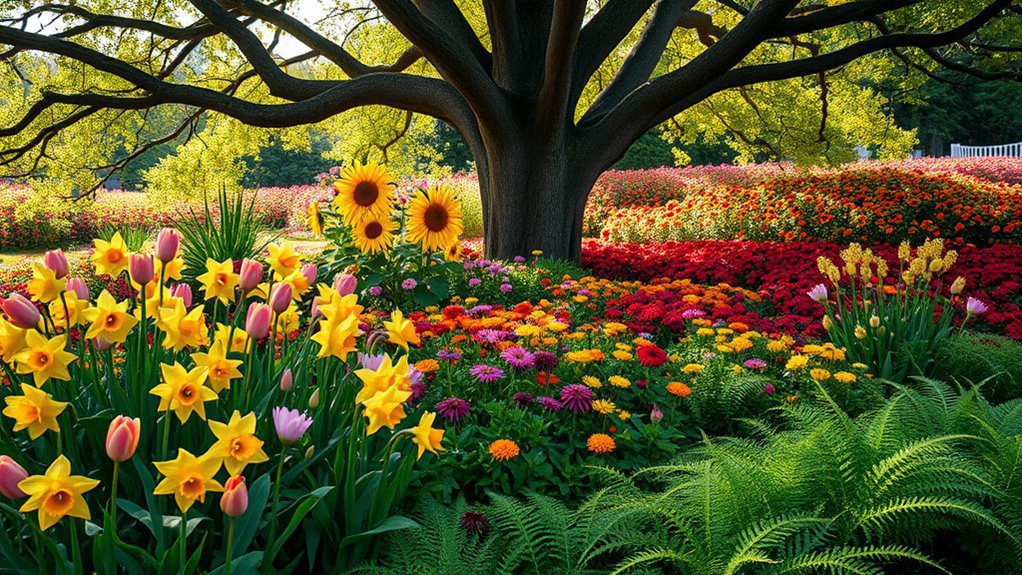
To create a vibrant flower bed that offers year-round interest, it’s crucial to plan for seasonal color. Start by selecting a mix of perennial and annual flowers that bloom at different times throughout the year. Incorporate early spring blooms like tulips and daffodils, followed by summer favorites like sunflowers and zinnias, and finish with autumn’s rich hues from asters and chrysanthemums. This strategic layering guarantees your garden remains visually appealing across all seasons, attracting pollinators and enhancing your outdoor space.
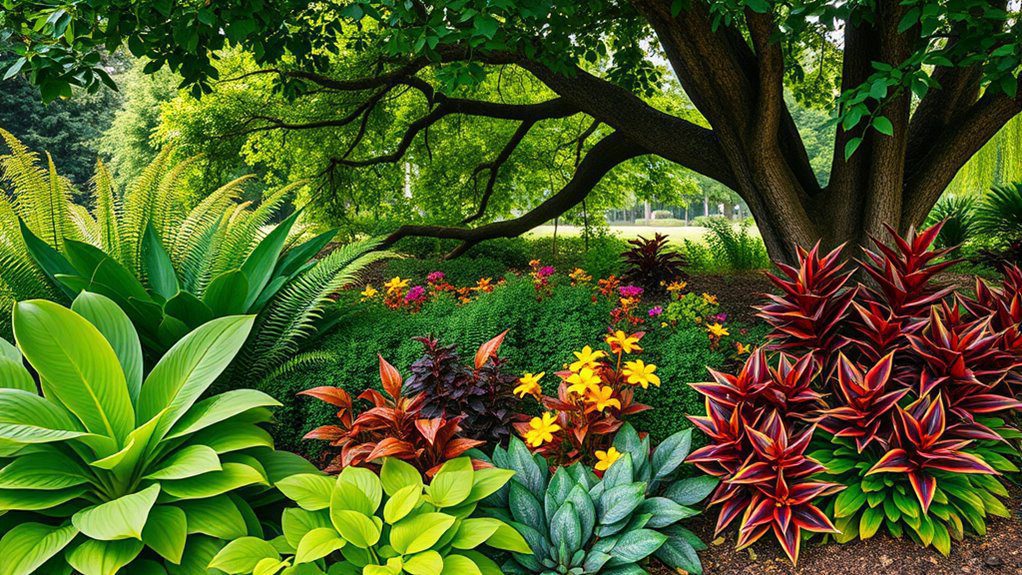
Incorporating foliage plants into your flower bed design is a fantastic way to add depth and texture. These leafy plants provide a beautiful contrast to vibrant blooms, creating a more dynamic visual interest. Look for varieties with interesting colors, shapes, and sizes, such as hostas, ferns, or heucheras. Mixing foliage plants not only enhances the aesthetic appeal but also helps fill in gaps during off-seasons, ensuring your garden remains lush and attractive year-round.
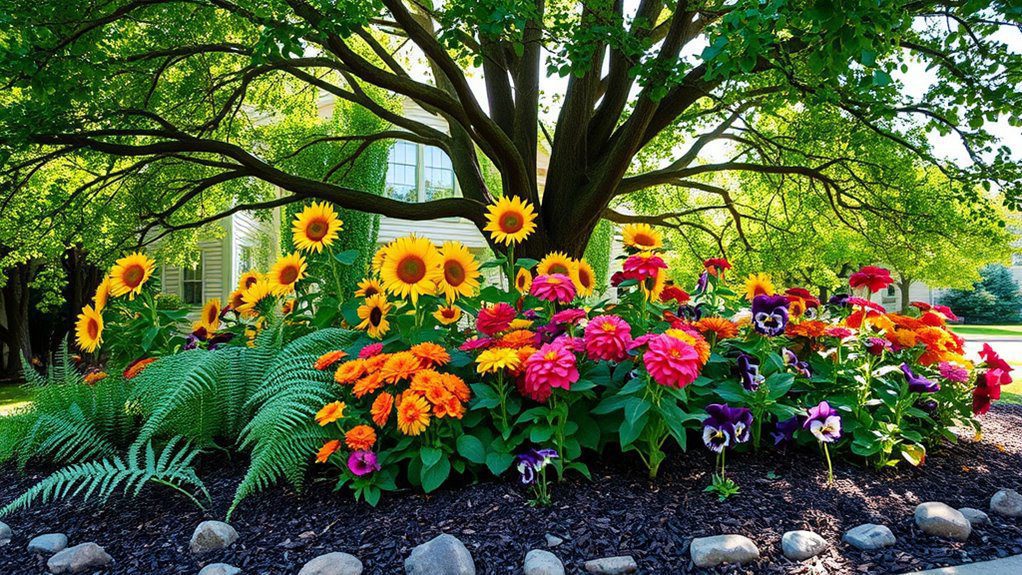
Layered planting techniques involve arranging flowers and plants in a tiered design, creating a visually appealing and harmonious display. By placing taller plants at the back and gradually shifting to shorter ones in the front, you guarantee that all plants receive adequate sunlight and are visible. This method not only enhances the aesthetic appeal of your flower bed but also promotes diversity in plant heights and textures, making your garden more vibrant and dynamic.
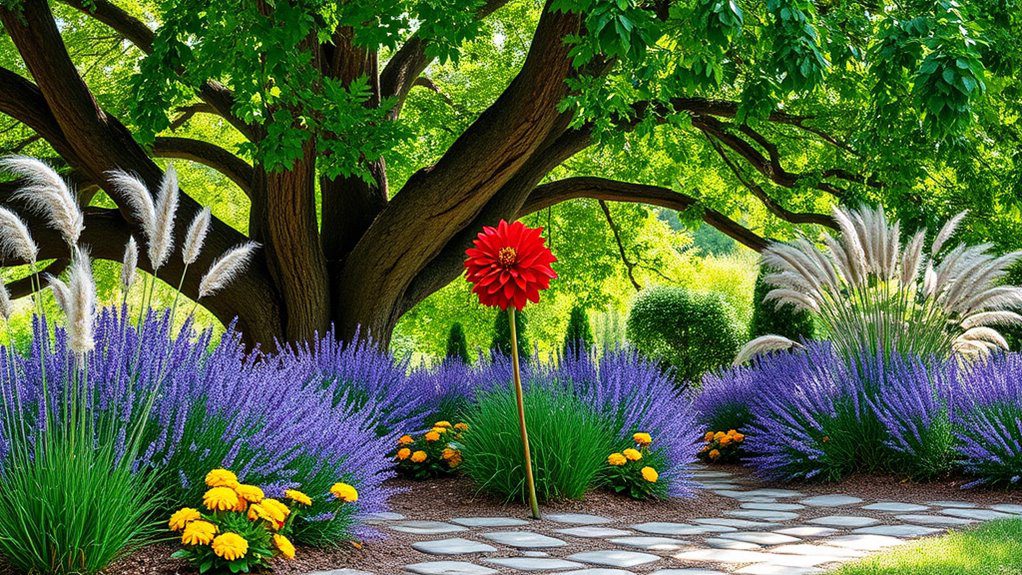
Creating a focal point in your flower bed can greatly enhance its visual appeal. Consider using a striking plant, such as a bold-colored flower or a unique foliage specimen, as the centerpiece. Surround it with complementary plants that vary in height and texture to draw the eye towards the focal point. You can also incorporate garden ornaments or decorative stones to add interest. This strategic arrangement will provide depth and make your flower bed more inviting and enchanting.
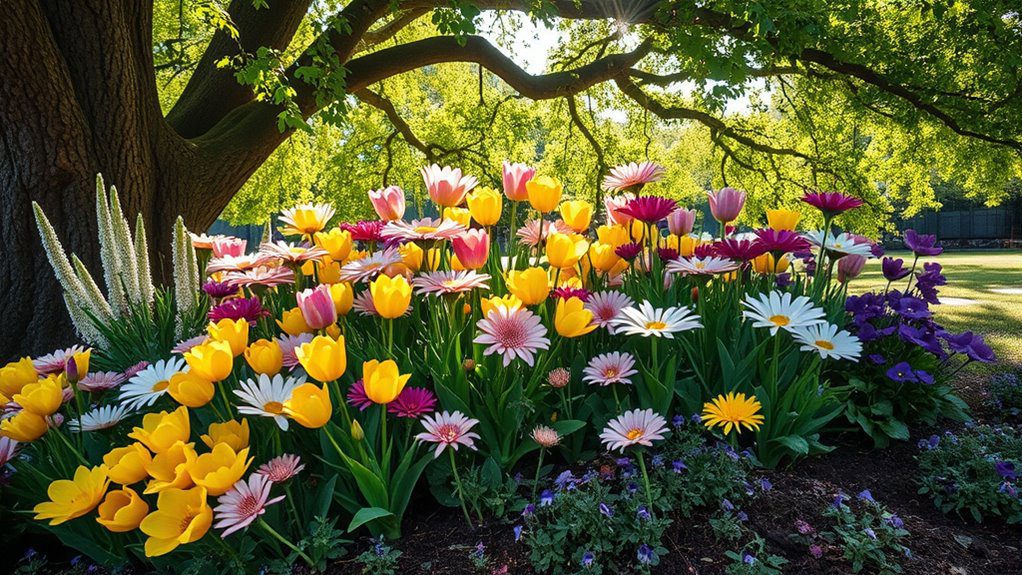
Selecting a color palette for your flower bed is essential to create a cohesive and aesthetically pleasing display. Consider choosing a theme, such as monochromatic shades for a sophisticated look, or a contrasting scheme for a vibrant and dynamic effect. You can also mix complementary colors to add depth. Be mindful of bloom times and foliage to guarantee a continuous display of color throughout the growing season, enhancing your garden’s beauty year-round.
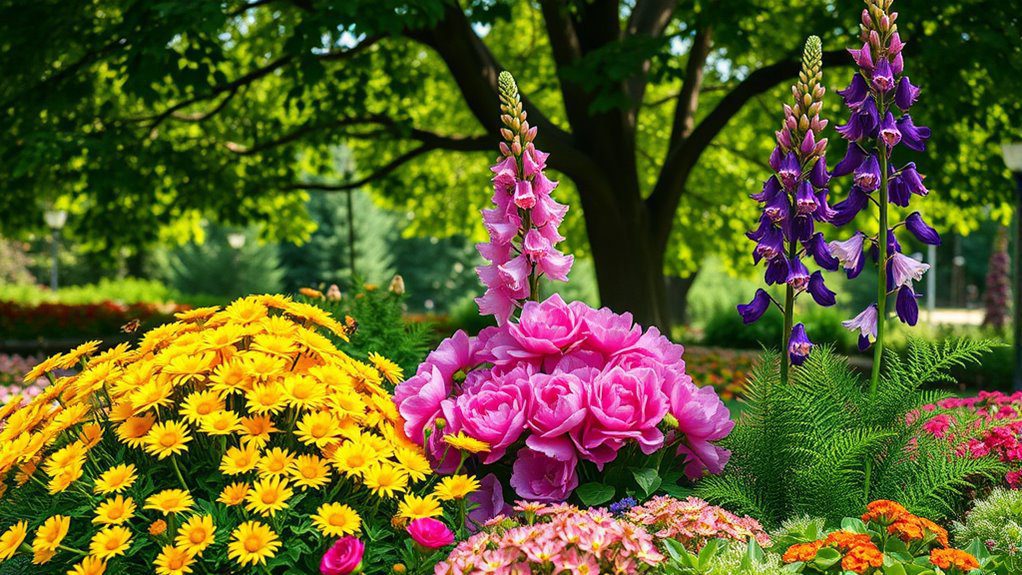
Grouping plants in odd numbers can create a more natural and visually appealing look in your flower bed. When you arrange plants in groups of three, five, or seven, it breaks up the symmetry and draws the eye in a more dynamic way. Odd-numbered plant clusters create focal points and can establish rhythm in your garden design, making it more engaging. Consider varying the heights and colors of plants within these groups to maximize impact and interest.
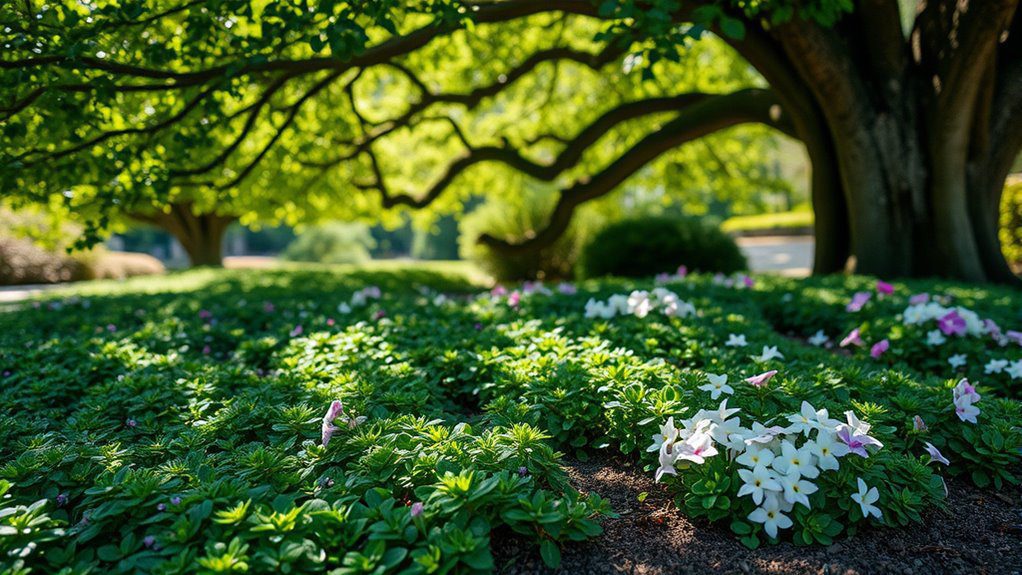
Ground cover plants are an excellent addition to your flower bed, offering beauty and practicality. They help suppress weeds, retain soil moisture, and can enhance the visual appeal of your garden by providing a lush, green backdrop to your flowering plants. Choose varieties that complement your flowers in color and height, such as creeping thyme, sedum, or phlox. These hardy plants are low-maintenance and can thrive in various conditions, making them a smart choice for any flower bed.
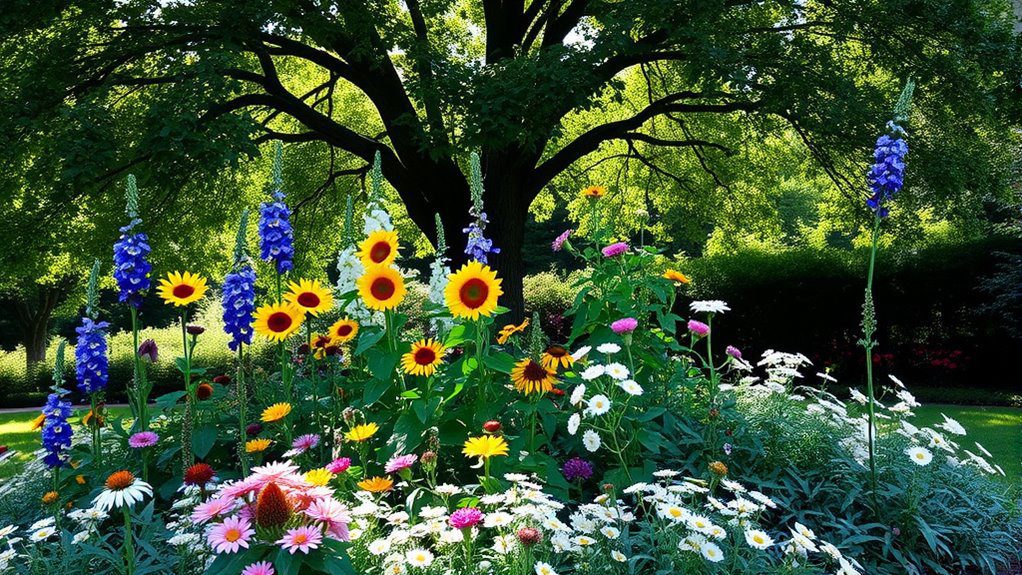
When planning your flower bed, it’s crucial to take into account the height of your plants to create a visually appealing arrangement. Taller plants should be positioned at the back or center, depending on the bed’s shape, while medium-sized and shorter plants should be placed in front. This layering effect not only enhances visibility but also allows each plant to shine. Additionally, varying heights add depth and texture, transforming a simple flower bed into a stunning focal point in your garden.
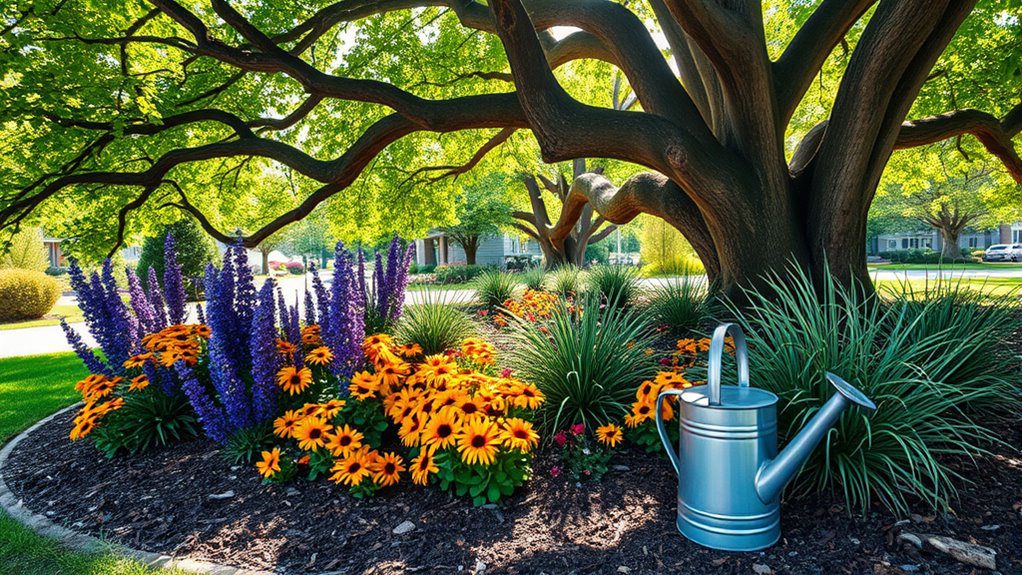
When planning a flower bed, it’s essential to reflect on maintenance requirements to guarantee long-lasting beauty. Selecting low-maintenance plants can save you time and effort, particularly if you have a busy lifestyle. Additionally, ponder factors like watering frequency, deadheading needs, and susceptibility to pests or diseases. Grouping plants with similar care requirements can streamline your gardening tasks, allowing you to enjoy a vibrant landscape without overwhelming upkeep. Prioritize your time by choosing features that align with your lifestyle!
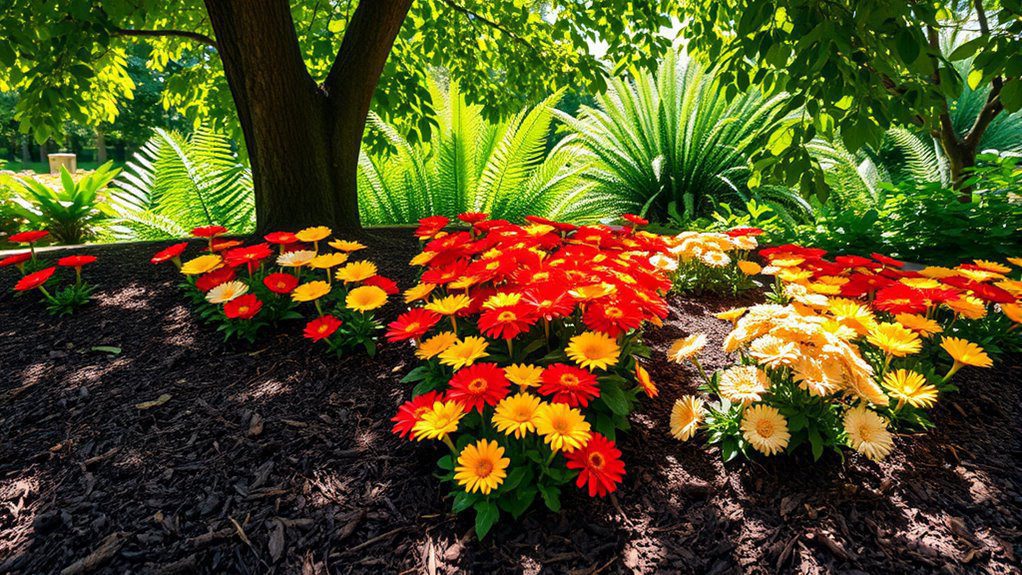
Mulch for moisture retention is an essential practice for maintaining healthy flower beds. By applying a layer of organic or inorganic mulch, you can reduce evaporation, keeping the soil moist for longer periods. This helps prevent the need for frequent watering, especially during hot, dry spells. Mulch also regulates soil temperature and suppresses weeds, allowing your flowers to thrive with less competition for nutrients and water. Choose a mulch that complements your garden’s aesthetic while providing these crucial benefits.
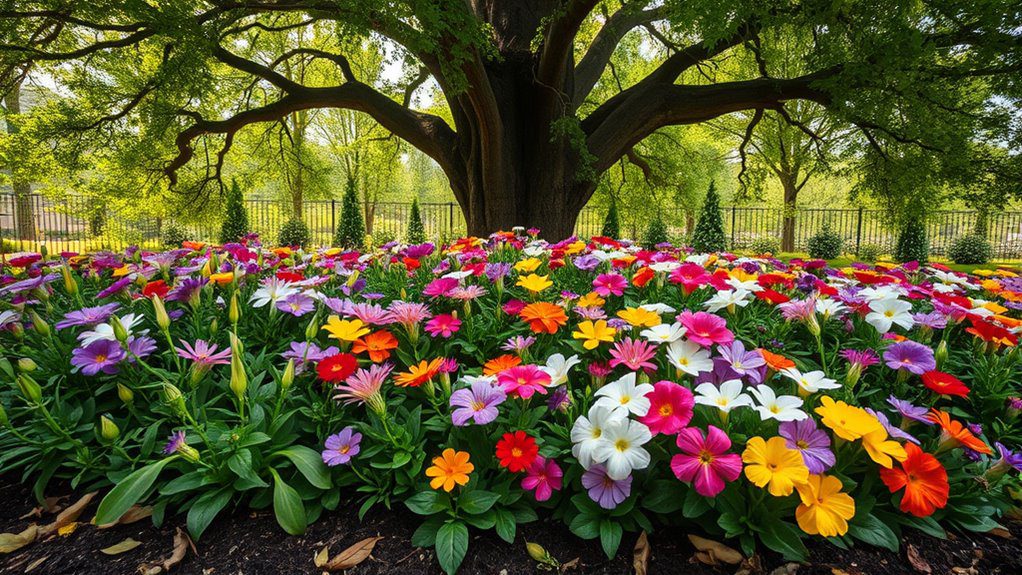
Ensuring adequate air circulation in your flower bed is essential for maintaining healthy plants. Proper spacing between flowers allows air to flow freely, reducing humidity and minimizing the risk of fungal diseases. Additionally, consider strategically placing taller plants toward the back while positioning shorter ones in front to create an open environment. Regularly pruning dead leaves and spent flowers can also enhance airflow, promoting vigorous growth and vibrant blooms throughout the season.
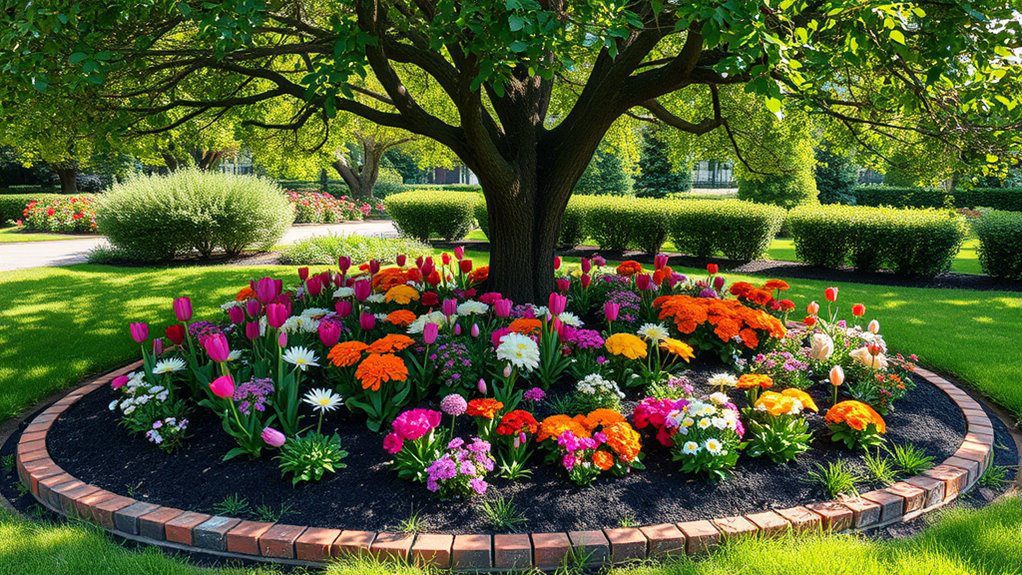
Incorporating edging into your flower bed not only defines its boundaries but also enhances its visual appeal. Choose materials like bricks, stones, or decorative metal to create a clean, crisp line that separates your blooms from surrounding grass or pathways. This added structure not only helps to contain soil and mulch but also prevents grass encroachment, making maintenance easier. Elevate your garden’s aesthetic while improving its organization with thoughtful edging choices.
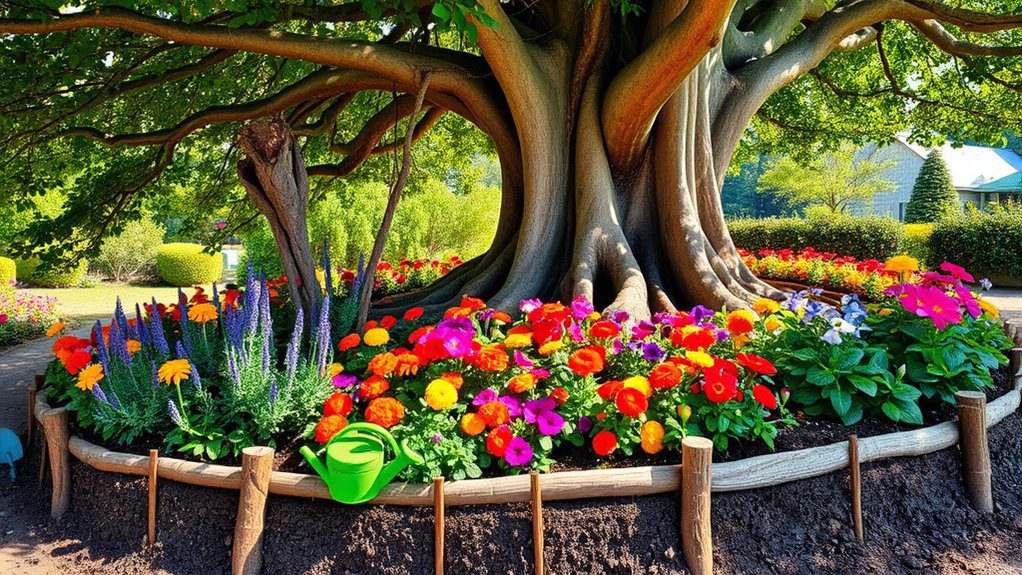
When creating a stunning flower bed, it’s essential to factor in tree root management. Tree roots can compete with your flowers for nutrients and water, potentially stunting growth. To manage this, consider installing root barriers, choosing deep-rooted plants, and selecting flower bed locations carefully away from tree trunks. Additionally, regularly monitoring the health of both your flowers and surrounding trees can help maintain a vibrant and thriving garden.
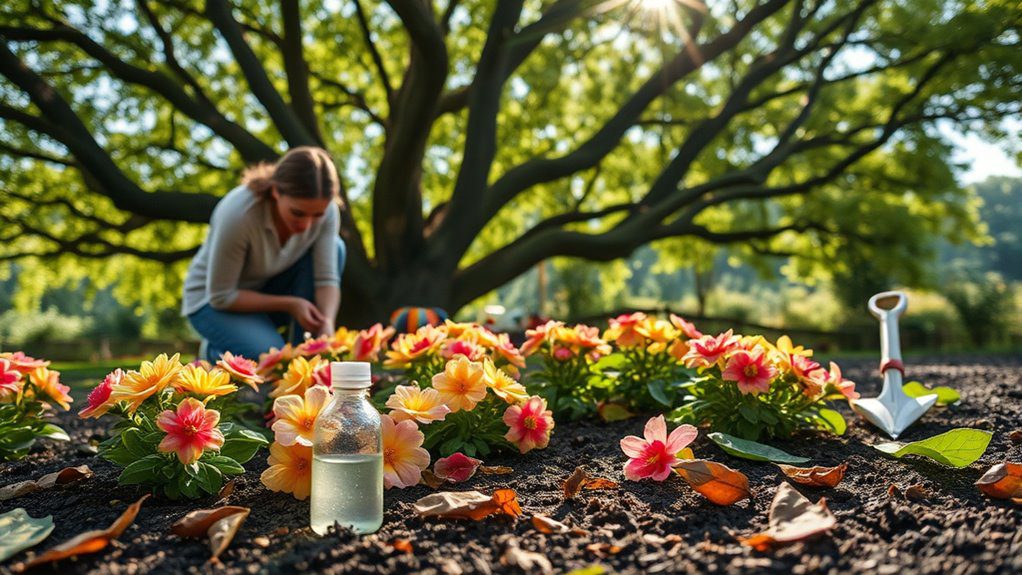
Monitoring for pests and diseases is essential for maintaining a vibrant flower bed. Regularly inspect your plants for any signs of damage or discoloration. Look for pests like aphids or spider mites and watch for fungal infections that can spread rapidly. Early detection allows for timely treatment, such as using insecticidal soap or organic fungicides, helping to preserve the health of your flowers. Keeping your flower bed clean and debris-free also minimizes potential issues.
By following these tips, you can create a vibrant flower bed that flourishes under the tree canopy. Don’t overlook the importance of choosing the right plants and maintaining soil quality; they’re essential for success. As you nurture your floral display, you’ll find joy in the transformation of your shaded space. Isn’t it rewarding to watch a once-dull area burst with color and life? With dedication and care, your flower bed can truly become a stunning sanctuary.
